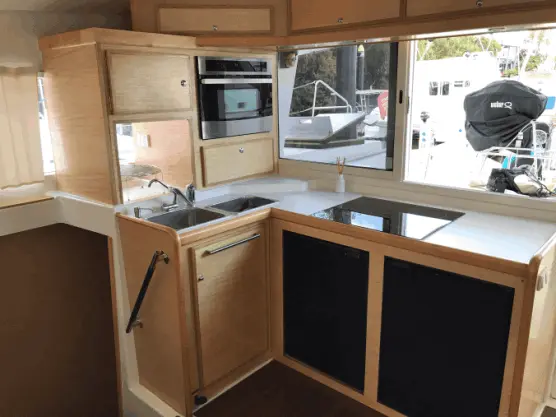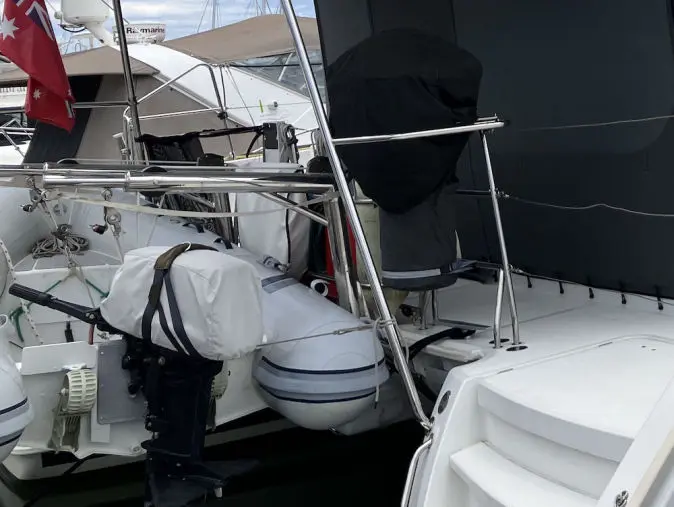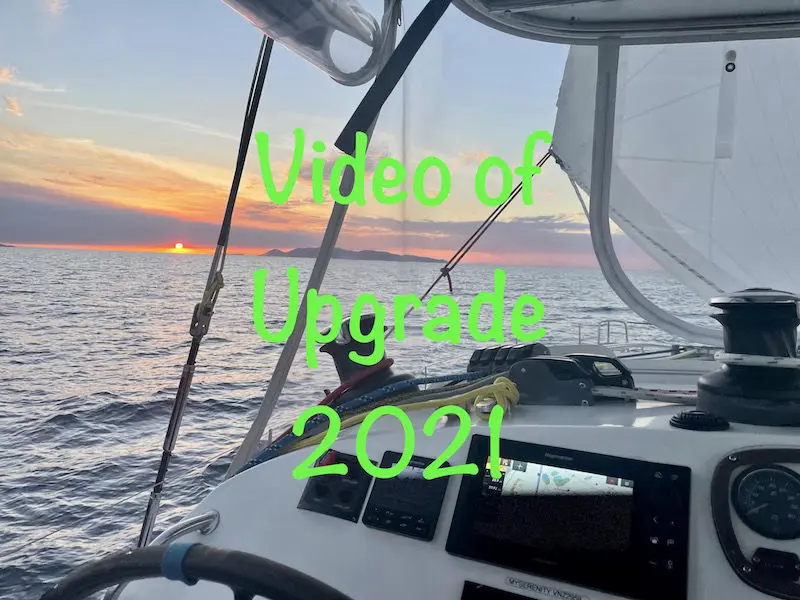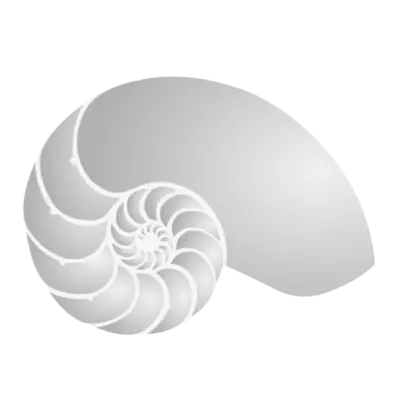
Main, Genoa & Screecher - Evolution Sails
The team at Evolution Sails - Gold Coast, were contracted to redesign our sails with the following requirements:
1. Square top,
2. Similar or better sail area without extending the boom or mast,
3. Improve sail shape & performance,
4. Improve into wind performance, and
5. All 3 reefs to be controlled from the helm.
Result on the previous sail areas are:
- Main size was increased 13% to 63.83sqM, the
- Genoa size increased by 3% to 39.85sqM, and
- Screecher/Code 0 remained much the same.
There are now 5 battens (2 more than previous), and two reworked factory batten-cars. The resultant modifications allow much improved single-handed reef changes - ALL FROM THE HELM.
The spinnaker even managed a new sock and neck, allowing easier 'snuffing' of the spinnaker from the helm via winch. Their service is exceptional.
VERY HAPPY FOLLOW-UP: We have found that the increased main sail area, is forcing us to 'reef' earlier (1st reef in around 15-20kts), as it forces more rudder deflection to keep the rudder centred. If we don't, the rudders cause unnecessary drag.
Love the full wardrobe of sails.

Docril Covers - Trimright
We have given up on Sunbrella, their fabric has gone downhill in the last 10-15 years. Say hello to Docril.
Contacted Cayne from Trimright - Gold Coast. He strongly recommended Docril.
Docril is a 100% solution-dyed acrylic fibre. It uses Teflon to protect the fabric, thus creating a barrier that reinforces the water repellency and delays dirt adherence.
More DOCRIL information is available here.
We have chosen to weather-proof the sides (with windows of mosquito netting) and mosquito net the aft section, given that there is little water and wind access at the best of times.
While the space was always there, it's much more usable in all weather conditions. In fact, double the comfort factor.
The helm too got a facelift with new clears. The very large zipped windows allow great ventilation through summer while keeping warmer & dry through winter.
Coupled with ALL sheets and halyards now leading to the helm, passages should be more safe with little need to venture outside the helm.
HAPPY FOLLOW-UP: Love it, nothing broken yet and we certainly have seen some bad weather in the last six months, winds and rain to 45kts.
Have had many pull up and compliment the exterior. You get what you pay for...
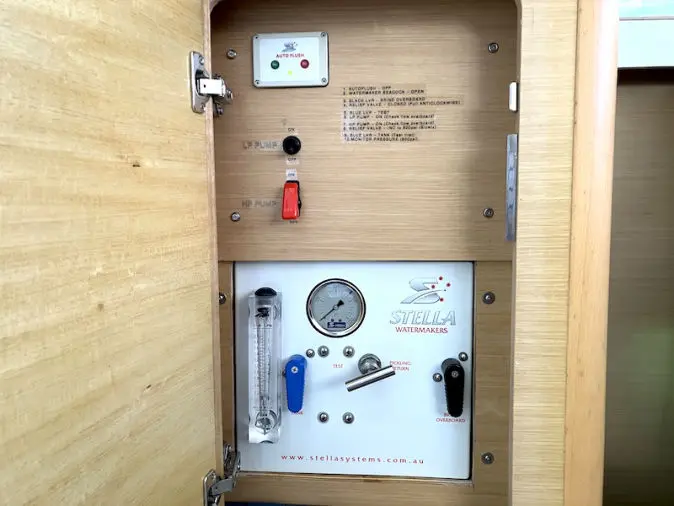
New STELLA Watermaker
The original factory installed desalinator was built by Dessalator. It worked very well as a 12V DC unit, however, water quantity was 35-40 litres per hour with TDS levels in excess of World Health Organisation standards (600ppm+), this was after changing membrames, filers & sensors.
We wanted a higher output (around 70 litres per hour) and had battery power to spare. We needed to get this TDS down below 300ppm.
STELLA water-makers utilises a 12V DC low pressure pump to provide low pressure water (through the filter system) to a high pressure pump. The 240V AC high pressure pump (at 4-6 amps), pressurises the water to 800+ psi before forcing it through the single 4-foot membrane.
What is super cool is that there are very few moving parts and no electronics (except for the auto-flush). This allows us to make precise adjustments to water quality. The result, 111ppm, watch our video here.
VERY HAPPY FOLLOW-UP: We continue to get sub-100ppm since the video was made. Really, really impressed, HUGE thank you to STELLA.
Two years on...130ppm with same membrane. Their followup service is amazing, very quick, fast delivery considering we needed the component in the Loyalty Islands.
